1918
Flick Friday: To Hell With The Kaiser! 1918
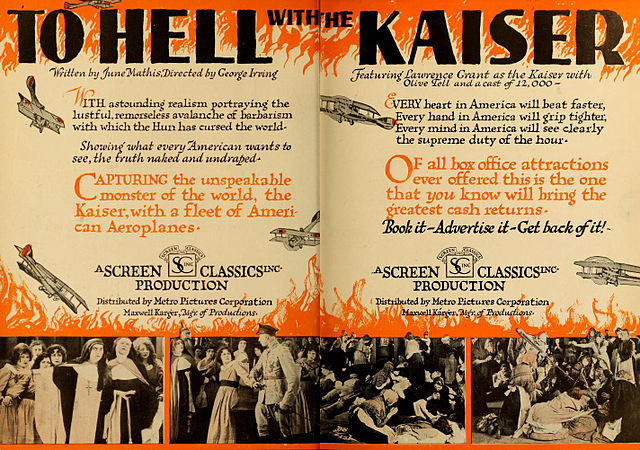
Source: Archive Image
Author: Metro Pictures/Screen Classics, Inc.
One-hundred, five years, ago, today…the silent black & white, comedy-drama To Hell With The Kaiser! was released. Written by June Mathis and directed by George Irving, it starred Lawrence Grant (as The Kaiser/actor Robert Graubel), Olive Tell, Betty Howe, John Sunderland, Earl Schenck (as the Crown Prince), Mabel Wright, Frank Currier, Karl Dane and Walter P. Lewis as Satan.
Following the death of his father, Frederick III of Germany, Wilhelm Hohenzollern becomes the German Kaiser and forms a pact with the devil that, he will conquer the globe in exchange for his soul. During the Kaiser’s invasion of Belgium, the Crown Prince enters a church and rapes Ruth Monroe, the daughter of an American inventor who has perfected a noiseless communications device. When the professor denounces the Crown Prince, he immediately is shot, whereupon his other daughter Alice vows to obtain revenge. While Alice’s sweetheart, Winslow Dodge, fights with the Americans as an aviator, she arranges to meet the Crown Prince through her friend Robert Graubel, an actor who impersonates the Kaiser at public functions. With her father’s wireless [device], Alice informs Winslow of the Kaiser’s whereabouts and, as he captures the German emperor, she kills the Crown Prince. Now a prisoner, the Kaiser drowns himself and wakes up in Hell, where Satan abdicates in his favor, saying that the Kaiser’s tortures are more fiendish than any he ever devised.
IMDb Storyline

Lobby Poster
IMDb & Amazon
Lawrence Grant, who spent his lengthy career playing odious villains, appeared in the dual role of Kaiser Wilhelm II and his look-alike, German actor Robert Graubel. Terrified of being assassinated, the Kaiser hires Graubel to impersonate him at various political functions. In the film, the Kaiser achieves military success through an infernal pact with Satan. Once this is established, the film concentrates on the seemingly endless tally of misdeeds perpetrated by the Kaiser during his quarter-century reign over Germany. His “partner in crime” is the Crown Prince […], who thinks nothing of casually raping convent girls and gunning down protesting nuns. The Crown Prince’s latest conquest is Ruth Monroe […], the daughter of an American inventor. When Ruth’s father protests this outrage, he is brutally murdered, whereupon Ruth’s sister Alice […] vows revenge. Using her father’s newest invention, a wireless machine whose coded messages cannot be intercepted, Alice directs a battalion of planes to bomb the small German village where the Kaiser is hiding. Captured by the Allies, the Kaiser is ignominiously dumped in a POW camp but, not before enduring a well-aimed sock on the jaw from a pugnacious dough-boy. In despair, the Kaiser commits suicide and sends his soul to hell. In hell, the devil […] gives up his throne, confessing that the Kaiser is far more sinister than he could ever hope to be.
[On June 8, 1918], Motography ran a Screen Classics press release explaining that To Hell With The Kaiser “reveals the machinations of Europe’s military monster before and during the war, his contempt for Americans […], his elaborate plans to crush France, […] destroy Russia, […] partition the world, […] his [order] to employ deadly gases in the war, the true circumstances under which he ordered the sinking of the Lusitania, the raiding of hospitals […].” Years before the war, Mr. Grant’s physical likeness to the German ruler was noted by a high official of the Kaiser’s court and a proposition was made for Grant to play the Kaiser in a dramatization […]. The war broke out before discussions went any further.
Actor John Sunderland, playing American pilot Winslow Dodge, was himself “an aviator who has seen service in Belgium.”
[It] had been released in the press that Kaiser Wilhelm II had half a dozen doubles who were employed to pose for him in various parts of the country, where there might be danger of assassination, while the real Kaiser, himself, remained safe behind this cloak.
To Hell With The Kaiser opened in New York City at the Broadway Theatre on June 30, 1918, immediately after it had emerged from the cutting and editing rooms […].
The film turned out to be an effective propaganda tool […]. Not only has the picture been shown in munitions plants and training camps […] but, this power has now been demonstrated in a new way…to convert conscientious objectors.
The National Film Preservation Board (NFPB) included this film on its list of Lost U.S. Silent Feature Films as of February 2021.
I found the building of this post fascinating. What started out as a simple movie post, turned into a history lesson. It’s a shame that it is lost. There are photographs of still pictures on IMDb. ~Vic
Throwback Thursday: The Carolina Parakeet 1918
John James Audubon painting…1825
One hundred and one years ago, today, the last known Carolina Parakeet, a small, green, neotropical parrot native to the United States, died in captivity at the Cincinnati Zoo.
It was the only indigenous parrot to the Mid-Atlantic, Southeast & Midwest states. They ranged from southern New York, to the southern tip of Wisconsin, to Eastern Colorado, down to Central & Eastern Texas, across the Gulf of Mexico to the seaboard and all parts in-between. Also called a Carolina Conure (conuropsis carolinensis), they had a bright yellow head with a reddish-orange face and a pale beak.
From Audubon:
[…] lived in old forests along rivers. It is the only species classified in the genus Conuropsis. It was called puzzi la née (“head of yellow”) or pot pot chee by the Seminole and, kelinky in Chickasaw.
The last known wild specimen was killed in Okeechobee County, Florida, in 1904, and the last captive bird died at the Cincinnati Zoo on February 21, 1918. This was the male specimen, called “Incas”, who died within a year of his mate, “Lady Jane”. Coincidentally, Incas died in the same aviary cage in which the last Passenger Pigeon, “Martha“, had died nearly four years earlier. It was not until 1939, however, that it was determined that the Carolina Parakeet had become extinct. Some theorists at this time, though, believed a few may have been smuggled out of the country in mid 20th century and may have repopulated elsewhere, although the odds of this are extremely low. Additional reports of the bird were made in Okeechobee County, Florida, until the late 1920s, but these are not supported by specimens.
The Carolina Parakeet is believed to have died out because of a number of different threats. To make space for more agricultural land, large areas of forest were cut down, taking away its habitat. The bird’s colorful feathers (green body, yellow head and red around the bill) were in demand as decorations in ladies’ hats. The birds were also kept as pets and could be bred easily in captivity. However, little was done by owners to increase the population of tamed birds. Finally, they were killed in large numbers because farmers considered them a pest, although many farmers valued them for controlling invasive cockleburs. It has also been hypothesized that the introduced honeybee helped contribute to its extinction by taking many of the bird’s nesting sites.
A factor that contributed to their extinction was the unfortunate flocking behavior that led them to return immediately to a location where some of the birds had just been killed. This led to even more being shot by hunters as they gathered about the wounded and dead members of the flock.
This combination of factors extirpated the species from most of its range until the early years of the 20th century. However, the last populations were not much hunted for food or feathers, nor did the farmers in rural Florida consider them a pest, as the benefit of the birds’ love of cockleburs clearly outweighed the minor damage they did to the small-scale garden plots. The final extinction of the species is somewhat of a mystery but, the most likely cause seems to be that the birds succumbed to poultry disease, as suggested by the rapid disappearance of the last, small but, apparently healthy and reproducing flocks of these highly social birds. If this is true, the very fact that the Carolina Parakeet was finally tolerated to roam in the vicinity of human settlements proved its undoing. The fact remains, however, that persecution significantly reduced the bird’s population over many decades.

From Birds of North America:
A consumer of sandspurs, cockleburs, thistles, pine seeds and bald cypress balls, as well as fruits, buds and seeds of many other plant species, the Carolina Parakeet was evidently a fairly typical psittacid with catholic feeding habits, loud vocalizations and highly social tendencies. However, unlike many other parrots, it was clearly a species well adapted to survive cold winter weather. Although generally regarded with favor by early settlers, the parakeet was also known locally as a pest species in orchards and fields of grain and, was persecuted to some extent for crop depredations. Its vulnerability to shooting was universally acknowledged and was due to a strong tendency for flocks not to flee under fire but, to remain near wounded con-specifics that were calling in distress.
[…] there are no known ways to evaluate many issues in Carolina Parakeet biology except through extrapolations from the biology of closely related species and through reasoned interpretations of the fragmentary writings of observers who have long since passed from the scene. Fortunately, early naturalists prepared a few accounts with substantial amounts of useful information.
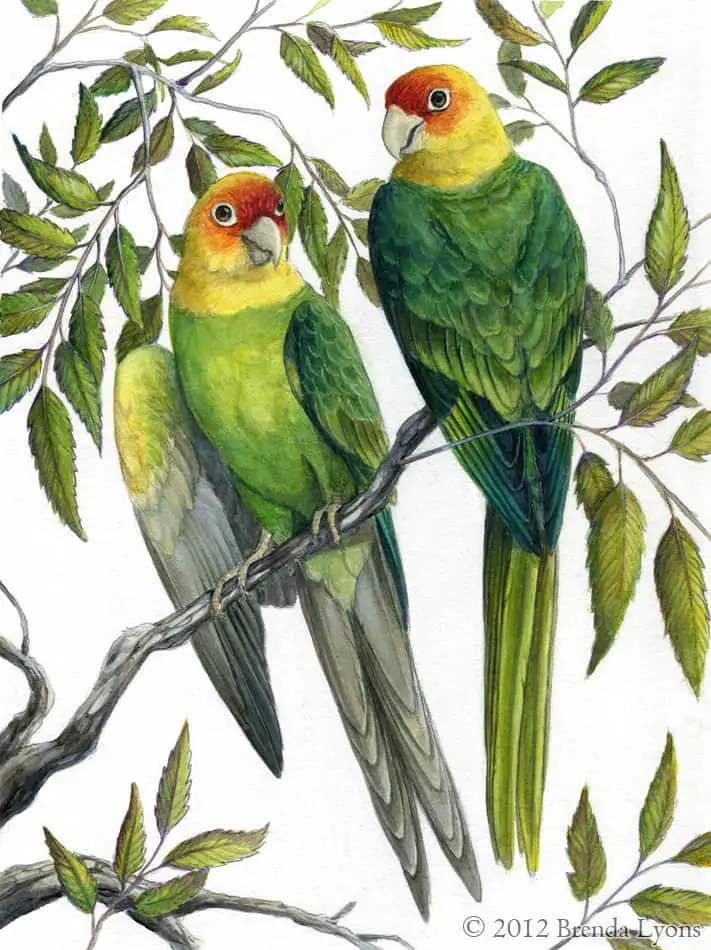
From All About Birds:
Outside of the breeding season the parakeet formed large, noisy flocks that fed on cultivated fruit, tore apart apples to get at the seeds and, ate corn and other grain crops. It was therefore considered a serious agricultural pest and was slaughtered in huge numbers by wrathful farmers. This killing, combined with forest destruction throughout the bird’s range and, hunting for its bright feathers to be used in the millinery trade, caused the Carolina Parakeet to begin declining in the 1800s. The bird was rarely reported outside Florida after 1860 and was considered extinct by the 1920s.
I had no idea that my area of the U.S. had a native parrot species. It is a crying shame that this beautiful, lively bird was driven to extinction. They were easily tamed and had long life spans. Perhaps, there are some still in existence and carefully hidden. ~Vic
Movie Monday: Shoulder Arms 1918

Today, we are going waaaaaaay back…to 1918. On this date, Shoulder Arms, a Charlie Chaplin piece, was a very popular film. Was it a ‘number one’? Hard to tell. This film pre-dates the Academy Awards by 11 years. Starring Sir Charles Spencer Chaplin, Edna Purviance, Sydney Chaplin (Charlie’s elder, half-brother) and Tom Wilson, it is, primarily, a dream sequence set in France during World War I.
Plot from IMDB:
Charlie is in boot camp in the “awkward squad.” Once in France, he gets no letters from home. He finally gets a package containing limburger cheese, which requires a gas mask and which he throws over into the German trench. He goes “over the top” and captures thirteen Germans (“I surrounded them”) then, volunteers to wander through the German lines disguised as a tree trunk. With the help of a French girl, he captures the Kaiser and the Crown Prince and, is given a statue and victory parade in New York. Then…fellow soldiers wake him from his dream. [edited for grammar]
From an archived New York Times article:
“”The fool’s funny,” was the chuckling observation of one of those who saw Charlie Chaplin’s new film. “Shoulder Arms”, at the Strand, yesterday and, apparently, that’s the way everybody felt. There have been learned discussions as to whether Chaplin’s comedy is low or high, artistic or crude but, no one can deny that when he impersonates a screen fool, he is funny. Most of those who go to find fault with him remain to laugh. They may still find fault but, they will keep on laughing. In “Shoulder Arms”, Chaplin is as funny as ever.” [edited for grammar]
Trivia Bits:
♦ Many in Hollywood were nervous that one of their most famous peers was going to tackle the subject of WWI. It was released shortly before the Armistice so, it did not help boost national morale but, it did end up as one of Charles Chaplin’s most popular films and, it was particularly popular with returning doughboys.
♦ Released two weeks and one day before the end of World War I.
Story Sunday: War & Remembrance 1918

“On the eleventh hour of the eleventh day of the eleventh month, the guns fell silent.”
[Note: This is not a post to re-visit the actual war or discuss the minute details of every event. I will leave that to the historical scholars.]
One hundred years ago, today, the “war to end all wars” came to an end with the signing of the final Armistice in a railroad car in Compiègne, France. The Austro-Hungarian Empire, Bulgaria and the Ottoman Empire had signed the previous three. This was not the actual surrender as the Treaty of Versailles formally ended the entire war. Signed on June 28, 1919, the treaty was on the exact day, five years later, of the assassination of the Archduke Franz Ferdinand of Austria.
The last shot fired, closing WWI, was by the American soldiers of Battery E, 11th Field Artillery and a Schneider Howitzer named Calamity Jane.
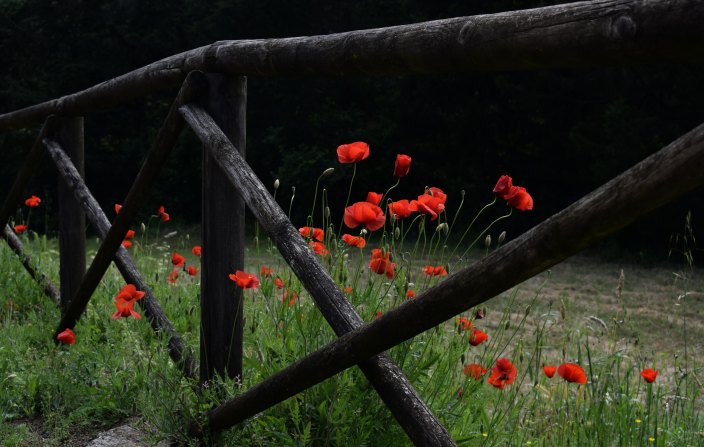
“The first minute of silence was to indicate gratitude for those who had returned alive…the second to remember the fallen.”
Edward George Honey, an Australian journalist, was the gentleman whom first proposed a moment of silence. The two-minute silence, practiced today, originated in Cape Town, South Africa, via that town’s then Mayor, Sir Harry Hands.
Remembrance Day or, Poppy Day, is the memorial day observed in the Commonwealth of Nations and many non-Commonwealth countries and, evolved from the Armistice Day. Remembrance Sunday is observed by the UK and Commonwealth nations on the Sunday closest to November 11. Armistice Day is the primary holiday in France, Belgium and Serbia. Serbian people wear Natalie’s Ramonda instead of the poppy. The French wear the Bleuet de France, a Cornflower.
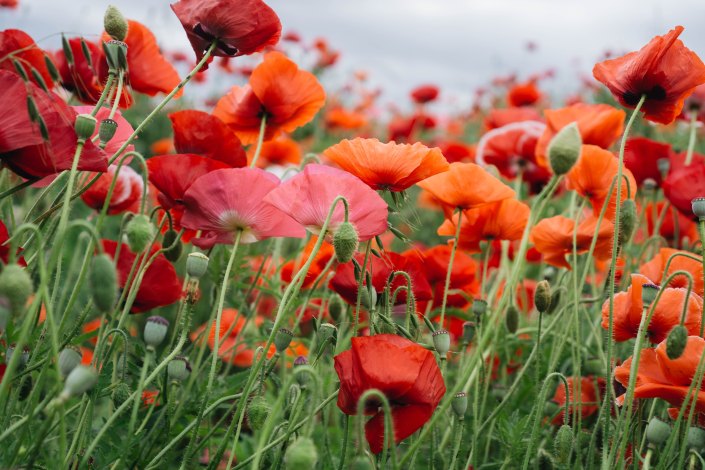
♢ Poland celebrates their National Independence Day on November 11.
♢ Italy celebrates their Armistice of Villa Giusti on November 4.
♢ The Republic of Ireland recognizes Armistice & Remembrance Day but, their National Day of Commemoration on the Sunday nearest July 11 is a reflection of their Irish War of Independence that started two months after the Armistice was signed.
♢ Denmark, The Netherlands, Norway and Spain were neutral and, have no specific WWI observances.
♢ Germany has a Peoples Day of Mourning covering all armed conflicts, observed on the Sunday closest to November 16.
We, here in the U.S., at the behest of several veterans organizations, changed Armistice Day to Veterans Day in 1954 to honor all veterans, regardless of a specific war. It is a national holiday and different from Memorial Day (last Monday in May), which honors those whom died while serving and, Armed Forces Day (also in May but, the third Saturday), honoring those currently serving.
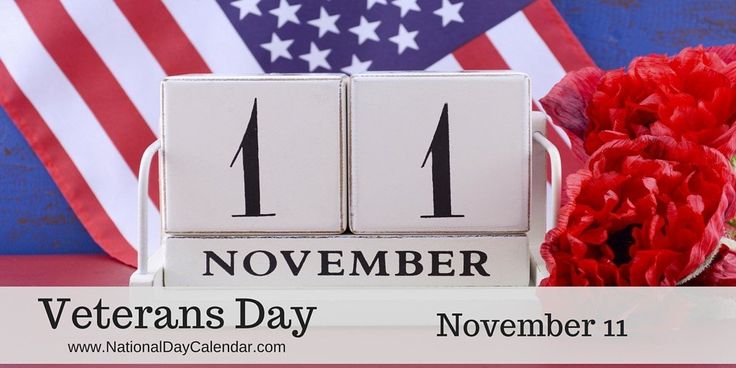
In Flanders Fields
In Flanders fields the poppies blow
Between the crosses, row on row,
That mark our place; and in the sky
The larks, still bravely singing, fly
Scarce heard amid the guns below.We are the Dead. Short days ago
We lived, felt dawn, saw sunset glow,
Loved and were loved, and now we lie
In Flanders fields.Take up our quarrel with the foe:
To you from failing hands we throw
The torch; be yours to hold it high.
If ye break faith with us who die
We shall not sleep, though poppies grow
In Flanders fields.~Lieutenant Colonel John McCrae
Canadian Expeditionary Force
We Shall Keep The Faith
Oh! you who sleep in Flanders Fields,
Sleep sweet – to rise anew!
We caught the torch you threw
And holding high, we keep the Faith
With All who died.We cherish, too, the poppy red
That grows on fields where valor led;
It seems to signal to the skies
That blood of heroes never dies,
But lends a lustre to the red
Of the flower that blooms above the dead
In Flanders Fields.And now the Torch and Poppy Red
We wear in honor of our dead.
Fear not that ye have died for naught;
We’ll teach the lesson that ye wrought
In Flanders Fields.~Moina Michael, the “Poppy Lady”
American Professor, University of Georgia
